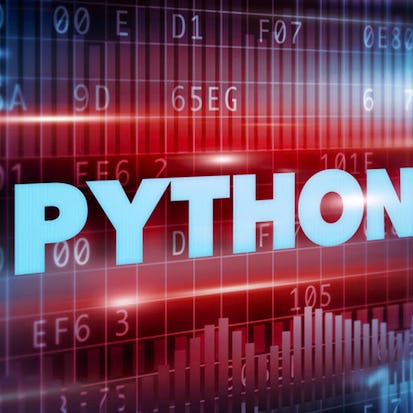- Level Foundation
- Duration 11 hours
- Course by University of California, Irvine
-
Offered by

About
The Raspberry Pi is a small, affordable single-board computer that you will use to design and develop fun and practical IoT devices while learning programming and computer hardware. In addition, you will learn how to set up up the Raspberry Pi environment, get a Linux operating system running, and write and execute some basic Python code on the Raspberry Pi. You will also learn how to use Python-based IDE (integrated development environments) for the Raspberry Pi and how to trace and debug Python code on the device. Please note that this course does not include discussion forums.Modules
---- Get Started ----
2
Readings
- Pre-Course Survey
- Course Overview
---- Module 1 ----
1
Videos
- Module 1 Introduction (Video)
2
Readings
- Module 1 Objectives
- Module 1 Reading
---- Lesson 1 ----
3
Videos
- Lecture 1.1 - Raspberry Pi Board (Updated)
- Lecture 1.2 - Raspberry Pi Processor
- Lecture 1.3 - Raspberry Pi vs. Arduino (Updated)
---- Lesson 2 ----
3
Videos
- Lecture 2.1 - Operating System Benefits
- Lecture 2.2 - Processes
- Lecture 2.3 - Raspberry Pi IoT
---- Lesson 3 ----
3
Videos
- Lecture 3.1 - Raspberry Pi Setup
- Lecture 3.2 - Raspberry Pi Configuration
- Lecture 3.3 - Overclocking (Updated)
---- Quiz and Peer Review ----
1
Assignment
- Module 1 Quiz
1
Peer Review
- Module 1 Peer Assignment:
---- Module 2 ----
1
Videos
- Module 2 Introduction (Video)
2
Readings
- Module 2 Objectives
- Module 2 Reading
---- Lesson 1 ----
3
Videos
- Lecture 1.1 - Linux Basics
- Lecture 1.2 - Login
- Lecture 1.3 - Linux Filesystem (Updated)
---- Lesson 2 ----
3
Videos
- Lecture 2.1 - Navigating the Filesystem (Updated)
- Lecture 2.2 - Text Editors (Updated)
- Lecture 2.3 - Accessing Files
---- Lesson 3 ----
3
Videos
- Lecture 3.1 - Permissions
- Lecture 3.2 - Processes
- Lecture 3.3 - Linux Graphic User Interface
---- Quiz and Peer Review ----
1
Assignment
- Module 2 Quiz
1
Peer Review
- Module 2 Peer Assignment
---- Module 3 -----
1
Videos
- Module 3 Introduction (Video)
2
Readings
- Module 3 Objectives
- Module 3 Reading
---- Lesson 1 ----
3
Videos
- Lecture 1.1 - Python on Raspberry Pi
- Lecture 1.2 - Python Programming Environment
- Lecture 1.3 - Python Expressions
---- Lesson 2 ----
3
Videos
- Lecture 2.1 - Strings
- Lecture 2.2 - Functions
- Lecture 2.3 - Function Arguments
---- Lesson 3 ----
3
Videos
- Lecture 3.1 - Lists
- Lecture 3.2 - List Methods
- Lecture 3.3 - Control Flow
---- Quiz and Peer Review ----
1
Assignment
- Module 3 Quiz
1
Peer Review
- Module 3 Peer Assignment
---- Module 4 ----
1
Videos
- Module 4 Introduction (Video)
2
Readings
- Module 4 Objectives
- Module 4 Reading
---- Lesson 1 ----
3
Videos
- Lecture 1.1 - General Purpose IO Pins
- Lecture 1.2 - Protocol Pins
- Lecture 1.3 - GPIO Access
---- Lesson 2 ----
3
Videos
- Lecture 2.1 - General Purpose IO Pins (Updated)
- Lecture 2.2 - Pulse Width Modulation
- Lecture 2.3 - Demo of a Blink
---- Lesson 3 ----
3
Videos
- Lecture 3.1 - Graphic User Interface
- Lecture 3.2 Tkinter Library
- Lecture 3.3 - Interaction
---- Quiz and Peer Review ----
1
Assignment
- Module 4 Quiz
1
Peer Review
- Module 4 Peer Assignment
----Please Complete this Survey----
1
Readings
- End-of-Course Survey
Auto Summary
Explore the Raspberry Pi Platform and Python Programming for IoT devices in this foundational course by Coursera. Dive into setting up the Raspberry Pi, running a Linux OS, and coding in Python. Learn to use Python-based IDEs and debug code effectively. Perfect for beginners in IT & Computer Science, this 660-minute course offers Starter, Professional, and Paid subscription options.

Ian Harris


